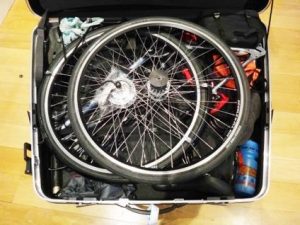E-bike efficiency
Efficiency is a key consideration in engineering an ultra-lightweight vehicle of any type. Following is a more detailed discussion.
Motor
Our motors have an efficiency (ratio of output power at the road to battery power consumed) of 80% at cruising speed. Moreover, we have “tuned” the gearing and stator winding to provide highest torque assist when the rider most needs it (hill climbing and headwinds, times of lower speed).
Drivetrain
Most bicycles, ours included, transmit the rider’s leg power to the road through a chain drive system. In its simplest form (a chain and 2 sprockets all in line) a well-lubricated drive of this type can achieve a mechanical efficiency of 98% (ratio of output power to input power). When a variable drive ratio is required (as in a multi-speed bike) either the chain is required to run misaligned relative to the plane of the sprockets (derailleur-type gearing) or changes in speed are achieved by introducing a separate gear train (internally geared hubs, see Technical Article 14, “Gear types – Derailleur & Internal”). Mechanical efficiency depends on which “speed” is selected (i.e., which front & rear sprocket combination), ranging from 90% to 95% for a derailleur drive in pristine condition, to 80% to 95% for internally geared hubs. Despite a bit of a sacrifice in drivetrain efficiency, we have chosen internally geared hubs for all but one of our models (CF Commuter), since there are many offsetting advantages (Article 14).



